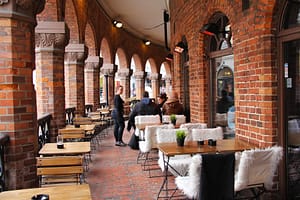Evidence of human settlement in Norway dates as far back as 11,000 BC after the end of the last Ice Age. Stone Age tools have been found in the northern and western areas, and around 1500 BC humans moved toward the Bronze Age. A few artifacts from the Iron Age in 500 BC onward have been recovered, although there is evidence that tribes were in trade contact with the more technologically advanced Romans who occupied Gaul.
Slowly through the centuries, the various groups in Norway came together to form one cultural identity, which was the start of the Viking era. Legend has it that Harald Fairhair successfully managed to unify the country after winning the Battle of Hafrsfjord near present day Stavanger, thus becoming the first king. The Vikings have a tremendous history that invokes stern images of seafaring and war mongering, along with horrendous stories of “rape and pillage.” As early explorers and colonizers, the Vikings were extremely successful, conquering many parts of eastern Britain and Ireland, and managing to reach as far as Greenland and Iceland.
Viking gods and Norse traditions eventually fell to Christianity, and Haakon the Good became Norway’s first Christian king in the 10th century. In 1319 the three-year king also became the King of Sweden supported by noblemen of the time. By 1500 AD all Nordic countries were united as the Kalmar Union, comprised of Denmark, Norway, southern parts of Finland, Greenland, Iceland, and Sweden.
Sweden broke out of the Kalmar Union in 1521, although rejoined with Norway in the 19th century. By 1905, Norway had peacefully separated from Sweden, the first time it had been an entirely independent nation for 586 years. The rest of the 20th century saw a checkered history, occupied by Nazi Germany for five years during WWII which stagnated growth, but afterwards regain its power. The country made great claims to North Sea oil deposits and is a major exporter feeding the strong economy. Norway ranks as the second wealthiest country in the world in terms of monetary value, and is constantly featured on the United Nations list for having the best standard of living in the world.
To learn more about the Viking past that dominated not only Norway but many other countries in the region, you can head to Lofotr Viking Museum which is the most comprehensive in the country. Carefully thought out displays and working demonstrations make history come alive at this cultural center.
Norway has a proud artistic heritage, boasting well-known and respected artists such as Edvard Munch, musicians such as Edvard Grieg and literary heroes such as Henrik Ibsen. To explore more, visit the National Museum or the National Gallery in Oslo. The annual arts festival in northern Norway is another great place to explore contemporary works and cultural performances.

